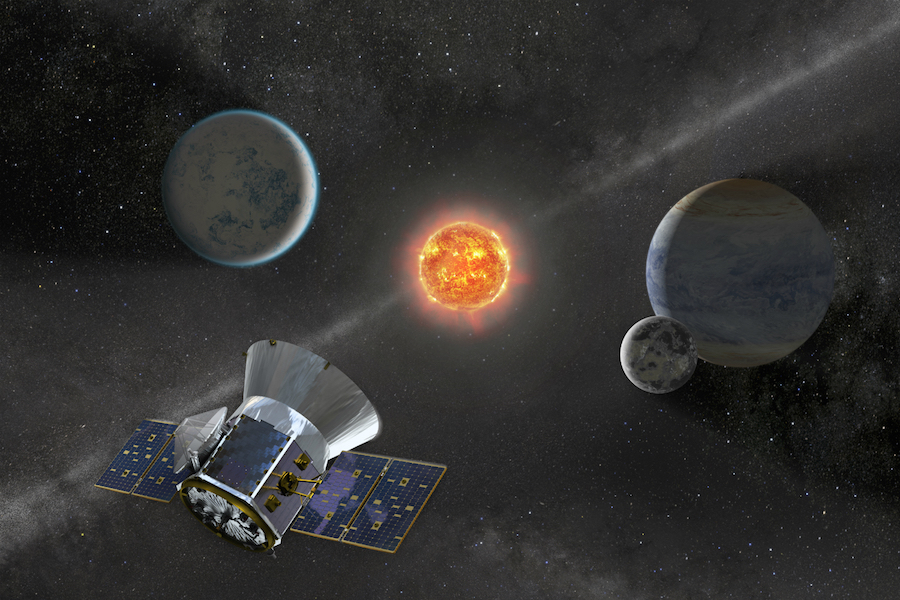
Six planets orbit their central star in a rhythmic beat, a rare case of an “in sync” gravitational lockstep that could offer deep insight into planet formation and evolution.

TESS reached a milestone. We now have over 5,000 exoplanet candidates. Scientists have a lot of work to do confirming them.

Astronomers studying data from NASA’s TESS mission have found a remarkable sextuple star system featuring three gravitationally bound eclipsing binaries.

The system around HD 158259 star consists of an innermost large rocky planet (a “super-Earth”) and five small gas giants (“mini-Neptunes”) that have exceptionally regular spacing between them.

Scientists identified the cause of the unusual single-sided pulsation of the star named HD 74423. It is located in a binary star system with a red dwarf - its close companion distorts the oscillations with its gravitational pull.

The habitable-zone planet is one of three orbiting a star known as TOI 700, a cool M dwarf located about 100 light-years from Earth. The candidate planet, TOI 700 d, is is at a distance where temperatures would allow water to exist in liquid form.

TESS is likely to find between 10,000 and 15,000 exoplanet candidates by 2025. By 2030, the European Space Agency’s GAIA and PLATO missions are expected to find another 20,000-35,000 planets.

The exoplanet is orbiting a small star 35 light years from Earth and is about 80 percent the size of Earth. It orbits its host sun, an M dwarf known as L 98-59, every 2.25 days.

The planet-hunting TESS spacecraft has found its first Earth-size planet orbiting a star located about 53 light years away. The star, HD 21749a, also hosts at least one other world, a warm “sub-Neptune” planet.

The three confirmed planets discovered so far using TESS are all within 100 light-years of our solar system, substantially closer than the nearly 2,700 validated worlds detected using Kepler.

Japanese scientists utilized a mix of ground and space based telescopes and revealed over 100 new extrasolar planets.

NASA's TESS, made an early discovery of "super-Earth" and "hot Earth" planets in solar systems at least 49 light-years away, marking the satellite's first discovery since its April launch.

NASA’s newest exoplanet-hunting spacecraft has started taking scientific data as of last week, according to a NASA release.

Scientists have analyzed data from K2, the follow-up mission to NASA's Kepler Space Telescope, and have discovered a trove of possible exoplanets amid some 50,000 stars.

Transiting Exoplanet Survey Satellite – TESS – has snapped a stunning test photo showing an estimated 200,000 stars cantered on the southern constellation Centaurus.